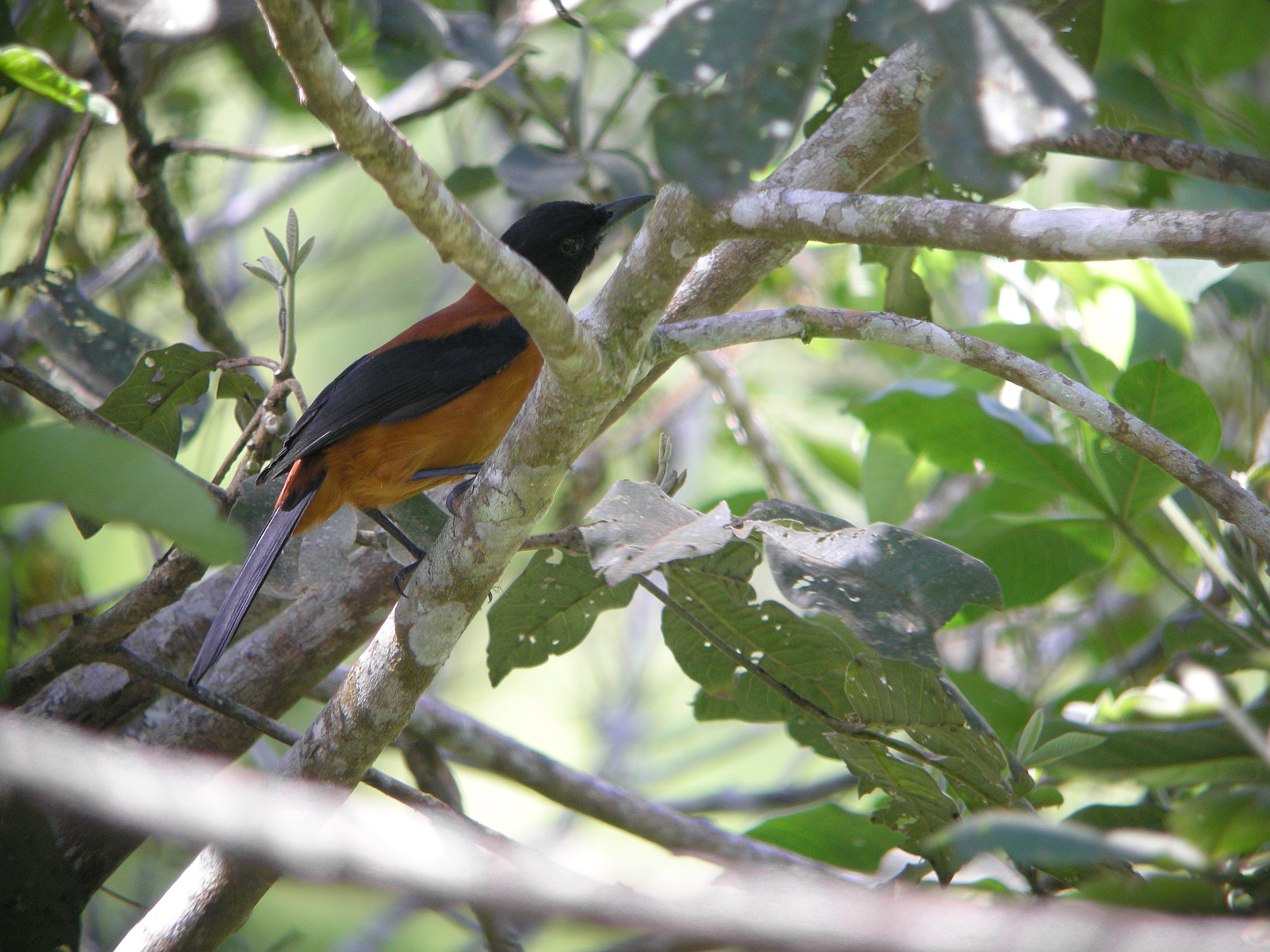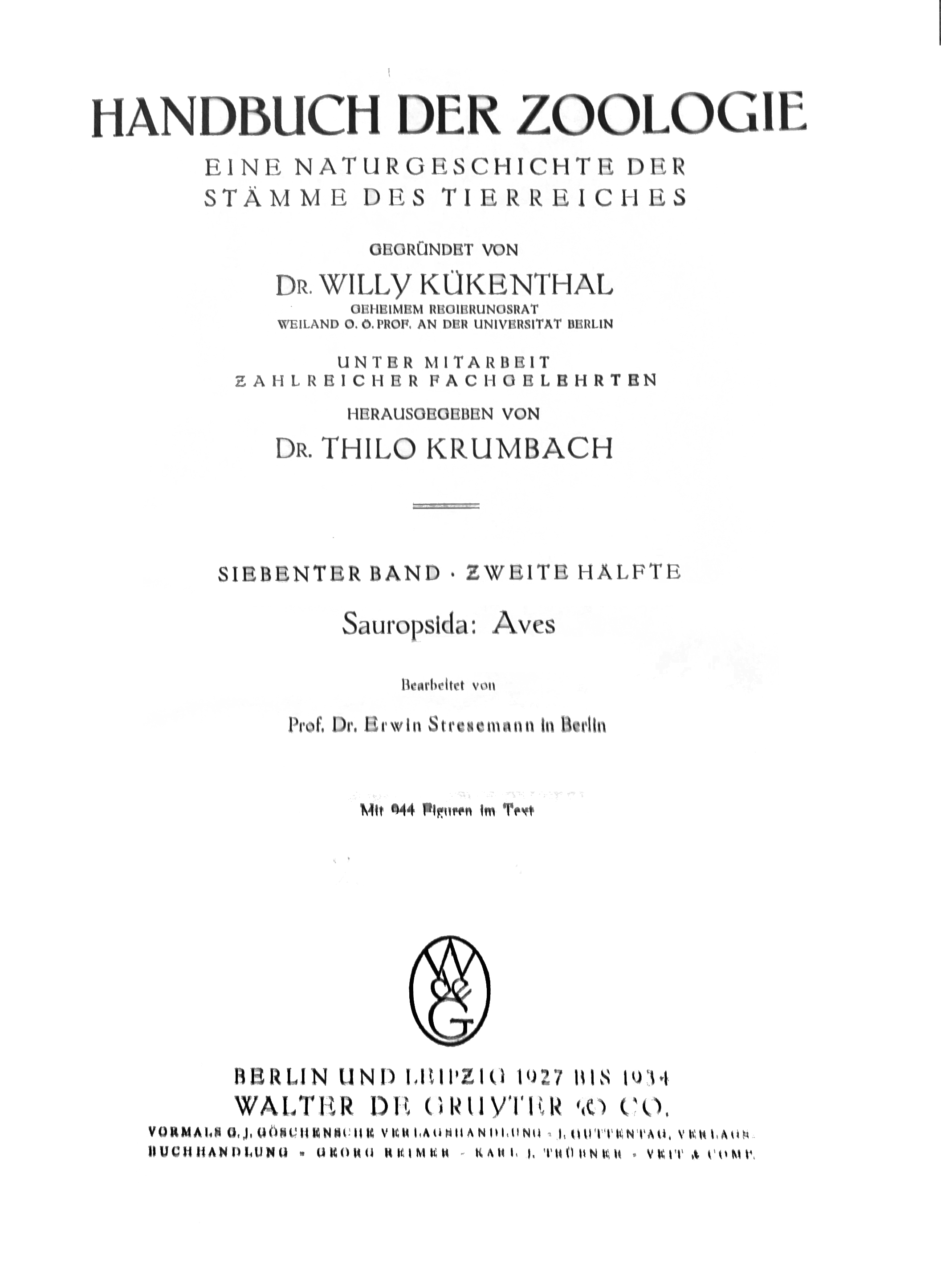|
Northern Variable Pitohui
The northern variable pitohui (''Pitohui kirhocephalus'') is a species of pitohui in the family Oriolidae. It is found on New Guinea and a number of neighbouring islands. Its natural habitat is subtropical or tropical moist lowland forests. It is also one of the few known poisonous birds. Taxonomy and systematics The northern variable pitohui was renamed from the variable pitohui in 2013 following the split of the Raja Ampat pitohui and the southern variable pitohui. Subspecies Eleven subspecies are recognized: * ''P. k. kirhocephalus'' - ( Lesson & Garnot, 1827): Found on eastern Vogelkop (north-western New Guinea) * ''P. k. dohertyi'' - Rothschild & Hartert, 1903: Originally described as a separate species. Found in Wandammen area (north-western New Guinea) * ''P. k. rubiensis'' - ( Meyer, AB, 1884): Originally described as a separate species. Found from head of Cenderawasih Bay to Triton Bay (western New Guinea) * ''P. k. brunneivertex'' - Rothschild, 1931: Found on ... [...More Info...] [...Related Items...] OR: [Wikipedia] [Google] [Baidu] |
Cenderawasih Bay
Cenderawasih Bay (, "Bird of Paradise Bay"), also known as Sarera Bay () and formerly Geelvink Bay (), is a large bay in northern Province of Papua, Central Papua and West Papua, New Guinea, Indonesia. Geography ''Cenderawasih Bay'' is a large bay to the northwest of the Indonesian province of Papua, north of the province of Central Papua, and east of the province of West Papua, between the Bird's Head Peninsula and the mouth of the Mamberamo River. The bay is more than 300 kilometers wide. The coastline from Manokwari, in the northwest of the bay, to Cape d'Urville at the mouth of the Mamberamo is more than 700 kilometers long. To the south, the Wandammen Peninsula heads north into the bay. Important places along the coast are Manokwari, Ransiki, Wasior and Nabire. The Wamma River, Tabai River, Warenai River, and Wapoga River empty into the Bay. History The Dutch name of the bay was after the frigate ''De Geelvink'' with which Jacob Weyland sailed through t ... [...More Info...] [...Related Items...] OR: [Wikipedia] [Google] [Baidu] |
Birds Described In 1827
Birds are a group of warm-blooded vertebrates constituting the class (biology), class Aves (), characterised by feathers, toothless beaked jaws, the Oviparity, laying of Eggshell, hard-shelled eggs, a high Metabolism, metabolic rate, a four-chambered heart, and a strong yet lightweight Bird skeleton, skeleton. Birds live worldwide and range in size from the bee hummingbird to the common ostrich. There are over 11,000 living species and they are split into 44 Order (biology), orders. More than half are passerine or "perching" birds. Birds have Bird wing, wings whose development varies according to species; the only known groups without wings are the extinct moa and elephant birds. Wings, which are modified forelimbs, gave birds the ability to fly, although further evolution has led to the Flightless bird, loss of flight in some birds, including ratites, penguins, and diverse endemism, endemic island species. The digestive and respiratory systems of birds are also uniquely a ... [...More Info...] [...Related Items...] OR: [Wikipedia] [Google] [Baidu] |
Birds Of Northern New Guinea
Birds are a group of warm-blooded vertebrates constituting the class Aves (), characterised by feathers, toothless beaked jaws, the laying of hard-shelled eggs, a high metabolic rate, a four-chambered heart, and a strong yet lightweight skeleton. Birds live worldwide and range in size from the bee hummingbird to the common ostrich. There are over 11,000 living species and they are split into 44 orders. More than half are passerine or "perching" birds. Birds have wings whose development varies according to species; the only known groups without wings are the extinct moa and elephant birds. Wings, which are modified forelimbs, gave birds the ability to fly, although further evolution has led to the loss of flight in some birds, including ratites, penguins, and diverse endemic island species. The digestive and respiratory systems of birds are also uniquely adapted for flight. Some bird species of aquatic environments, particularly seabirds and some waterbirds, have further ... [...More Info...] [...Related Items...] OR: [Wikipedia] [Google] [Baidu] |
Pitohui (genus)
''Pitohui'' is a genus of birds endemic (ecology), endemic to New Guinea. The birds formerly lumped together as pitohuis were found by a 2008 study that examined their evolutionary history on the basis of the genetic sequences to have included birds that were quite unrelated to each other. They have since been separated into other genera. Taxonomy and systematics The genus ''Pitohui'' was introduced in 1831 by the French naturalist René Lesson. Lesson omitted to specify the type species but this was designated as the northern variable pitohui by Richard Bowdler Sharpe in 1877. The genus name is a Papuan languages, Papuan word for the variable pitohui. The common group name pitohui includes several species of birds that were all historically classified in the genus ''Pitohui''. But now they have been separated into three families and multiple genera. The genus ''Pitohui'' in its strict sense is now placed in the family Oriolidae, while the other pitohui genera have been placed ... [...More Info...] [...Related Items...] OR: [Wikipedia] [Google] [Baidu] |
Pitohui
The pitohuis are bird species endemic to New Guinea. The onomatopoeic name is thought to be derived from that used by New Guineans from nearby Dorey (Manokwari), but it is also used as the name of a genus '' Pitohui'' which was established by the French naturalist René Lesson in 1831. The unitalicized common name however refers to perching birds that belong to several genera of multiple bird families. The genera include '' Ornorectes'', '' Melanorectes'', and '' Pseudorectes'' apart from ''Pitohui''. Taxonomy and systematics The Pitohui species were formerly all classified in the genus '' Pitohui'', which at the time was in the family Pachycephalidae. In 2013 they were separated into several different genera in several different families. The species are now separated into three families as follows: Oreoicidae * Crested pitohui ('' Ornorectes cristatus'') Pachycephalidae * Black pitohui ('' Melanorectes nigrescens'') * White-bellied pitohui ('' Pseudorectes incertu ... [...More Info...] [...Related Items...] OR: [Wikipedia] [Google] [Baidu] |
Astrolabe Bay
Astrolabe Bay is a large body of water off the south coast of Madang Province, Papua New Guinea, located at . It is a part of the Bismarck Sea and stretches from the Cape Iris in the south to the Cape Croisilles to the north. It was discovered in 1827 by Jules Dumont d'Urville Jules Sébastien César Dumont d'Urville (; 23 May 1790 – 8 May 1842) was a French List of explorers, explorer and French Navy, naval officer who explored the south and western Pacific, Australia, New Zealand and Antarctica. As a botanist an ... and named after his ship. Capital of Madang Province, Madang lies on the coast of Astrolabe Bay. See also * Astrolabe Bay Rural LLG * Naval Base Alexishafen References Bays of Papua New Guinea Madang Province {{MadangProvince-geo-stub ... [...More Info...] [...Related Items...] OR: [Wikipedia] [Google] [Baidu] |
Sepik
The Sepik () is the longest river on the island of New Guinea, and the third largest in Oceania by discharge volume after the Fly River, Fly and Mamberamo River, Mamberamo. The majority of the river flows through the Papua New Guinea (PNG) provinces of Sandaun (formerly West Sepik) and East Sepik, with a small section flowing through the Indonesian province of Papua (Indonesian province), Papua. The Sepik has a large catchment area, and landforms that include swamplands, tropical rainforests and mountains. Biologically, the river system is often said to be possibly the largest uncontaminated freshwater wetland system in the Asia-Pacific region. But, in fact, numerous fish and plant species have been introduced into the Sepik since the mid-20th century. Name In 1884, Germany asserted control over the northeast quadrant of the island of New Guinea, which became part of the German colonial empire. The colony was initially managed by the Deutsche Neuguinea-Kompagnie or German New ... [...More Info...] [...Related Items...] OR: [Wikipedia] [Google] [Baidu] |
Erwin Stresemann
Erwin Friedrich Theodor Stresemann (22 November 1889, in Dresden – 20 November 1972, in East Berlin) was a German naturalist and ornithologist. Stresemann was an ornithologist of extensive breadth who compiled one of the first and most comprehensive accounts of avian biology of its time as part of the ''Handbuch der Zoologie'' (Handbook of Zoology). In the process of his studies on birds, he also produced one of the most extensive historical accounts on the development of the science of ornithology. He influenced numerous ornithologists around him and oversaw the development of ornithology in Germany as editor of the ''Journal für Ornithologie''. He also took an interest in poetry, philosophy and linguistics. He published a monograph on the Paulohi language based on studies made during his ornithological expedition to the Indonesian island. Early life Stresemann was born in Dresden to Richard, an apothecary and Marie. His grandfather Theodor owned the ''Zum Roten Adler'' pharma ... [...More Info...] [...Related Items...] OR: [Wikipedia] [Google] [Baidu] |
Yapen
Yapen (also Japen, Jobi) is an island of Papua (province), Papua, Indonesia. The Yapen Strait separates Yapen and the Biak Islands to the north. It is in Cenderawasih Bay off the north-western coast of the island of New Guinea. To the west is Mios Num Island across the Mios Num Strait, and to the east Kurudu Island. Off the southeast coast of Yapen are the Amboi Islands and to the southwest are the Kuran Islands. Together these islands form the Yapen Islands Regency within the province of Papua. It is populated with communities of Yobi, Randowaya, Serui, and Ansus. Its highest point is . First recorded sighting by Europeans is by Spanish navigator Álvaro de Saavedra Cerón, Álvaro de Saavedra who landed on 24 June 1528 when trying to return from Tidore to New Spain. It was then charted as ''Paine'' within the ''Islas de Oro'' (Golden Islands in Spanish), as they called Yapen and the present day Schouten Islands, Schoutens. In 1545 it was visited by Yñigo Ortiz de Retez, ... [...More Info...] [...Related Items...] OR: [Wikipedia] [Google] [Baidu] |
George Junge
George Christoffel Alexander Junge (7 August 1905 – 3 February 1962) was a Dutch ornithologist who was an expert on the birds of Southeast Asia, especially Indonesia, and New Guinea. He was born in Haarlem and studied zoology at the University of Amsterdam, obtaining a doctorate in 1934 with a thesis on crustacean anatomy. From 1928 he studied avian systematics at the Zoological Museum of Amsterdam. In 1934, he was appointed head of the ornithological department at the Rijksmuseum van Natuurlijke Historie in Leiden Leiden ( ; ; in English language, English and Archaism, archaic Dutch language, Dutch also Leyden) is a List of cities in the Netherlands by province, city and List of municipalities of the Netherlands, municipality in the Provinces of the Nethe ..., a position he kept until his sudden and relatively early death at the age of 56. References 1905 births 1962 deaths Dutch ornithologists Dutch curators Scientists from Haarlem 20th-century Dutch zoologis ... [...More Info...] [...Related Items...] OR: [Wikipedia] [Google] [Baidu] |
Adi Island
Adi (or Adi Island, Indonesian: ''Pulau Adi'') is an Indonesian island. Adi is located approximately south of the equator in the Seram Sea off the western coast of New Guinea. It is severed from the Bomberai Peninsula Bomberai Peninsula () is located in the Western New Guinea region. It is south of the Bird's Head Peninsula, and Bintuni Bay separates the two peninsulas. To the west lies the Sebakor Bay and to the south Kamrau Bay. On the southeast Arguni ... by Nautilus Strait, the narrowest width of which is only . Adi marks the southern border of the Kamrau Bay; beyond lies the open Seram Sea.http://www.ppk-kp3k.kkp.go.id/direktori-pulau/index.php/public_c/pulau_info/13475 References {{reflist Islands of Western New Guinea Geography of West Papua (province) ... [...More Info...] [...Related Items...] OR: [Wikipedia] [Google] [Baidu] |








